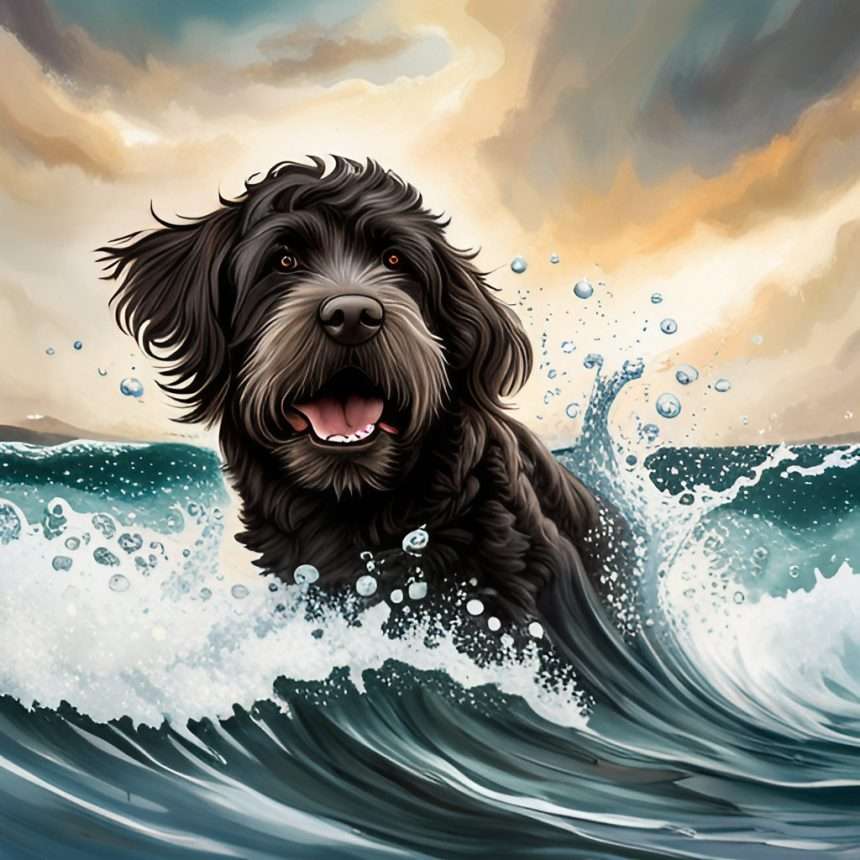Table of Contents
ToggleTeaching Your Furry Friend to Swim: The Ultimate Guide
Swimming is not just a fun activity for your pet, but it’s also an excellent form of exercise and a crucial survival skill.
However, contrary to popular belief, not all dogs are natural swimmers. Some breeds can struggle in the water, and even those who are natural swimmers need to learn safety protocols.
Here’s your comprehensive guide to teaching your pet to swim safely in the sea.
Why Learning to Swim is Important
Swimming is an excellent low-impact exercise that can keep your dog healthy and fit. It’s especially beneficial for senior dogs or those with joint problems as it provides a full-body workout without straining the joints1. Moreover, knowing how to swim can be a lifesaving skill if your dog ever ends up in the water unexpectedly.
If you are enjoying this post, you are going to love our Ultimate Guide To A Beach Adventure With Your Dog! This guide is jam-packed with tips, tricks, and advice on how to make the most of your next beach vacation with your pup.
Preparing for the First Swim
Acquiring the Right Gear
Before you head to the beach, make sure you have the right gear. A dog life jacket is essential, especially for beginners2. It helps your dog stay afloat and makes them more visible in the water. Also, have a leash to guide your dog in the water and ensure they don’t swim too far out.
Mental Preparation
Before you introduce your dog to the sea, spend some time playing near the water to help them get used to the sights, sounds, and smells. Reward your dog with treats and praise to create positive associations with the beach and the sea.
Training Techniques
Introducing Water Slowly
Start by allowing your dog to explore the shallow parts of the water. Encourage them to get their paws wet and gradually move to deeper water as they get comfortable. Always stay by their side to provide support and reassurance.
Positive Experiences
Make every swimming session a positive experience. Use toys, treats, and lots of praises to motivate your dog. Never force them into the water, as it can create fear and anxiety.
Safety Tips
Always keep an eye on your dog while they’re in the water. Watch out for signs of fatigue such as heavy panting, droopy ears, or difficulty staying afloat. If you notice these signs, guide your dog back to the shore immediately.
In case of an emergency, stay calm, call for help, and try to get your dog back to shore without putting yourself at risk. It’s always a good idea to have a first aid kit on hand and know basic pet CPR.
Post-Swim Care
After swimming, rinse your dog thoroughly with fresh water to remove salt and sand from their fur. Dry them properly, especially their ears, to prevent infections.
Also, ensure your dog doesn’t drink seawater as it can lead to dehydration and other health issues. Always bring fresh water and a bowl for your dog to drink from.
Teaching Your Dog to Swim
Teaching your dog to swim can be a fun and rewarding experience. However, remember that every dog is different, and what works for one might not work for another. Always respect your dog’s pace and comfort level, and most importantly, make sure both you and your furry friend enjoy the process!
Footnotes
- American Kennel Club, “Swimming is Great Exercise for Dogs” ↩
- PetMD, “Water Safety Tips for Dogs” ↩
- American Kennel Club, “Recognizing Signs of Dehydration in Dogs” ↩
- American Red Cross, “Pet First Aid” ↩
- VCA Hospitals, “Cleaning Your Dog’s Ears” ↩
- Banfield Pet Hospital, “Why Drinking Salt Water Is Dangerous For Dogs” ↩

Louie Montan
Meet Louie Montan, the dog-loving, beer-drinking, travel-writing extraordinaire behind Great White Website Services. As a full-time blogger, Louie’s passion for all things canine shines through in every post he creates. But don’t let that fool you, this creative mind is also well-versed in the art of travel and knows how to appreciate a good glass of cold beer with friends. When he’s not busy exploring new destinations or tasting different brews, you can find him jamming out to some tunes or indulging in his love for good food. And of course, no writing session is complete without his best friend, Sage by his side, providing invaluable insights and snuggles as Louie crafts his witty and engaging content from the comfort of his home office.







